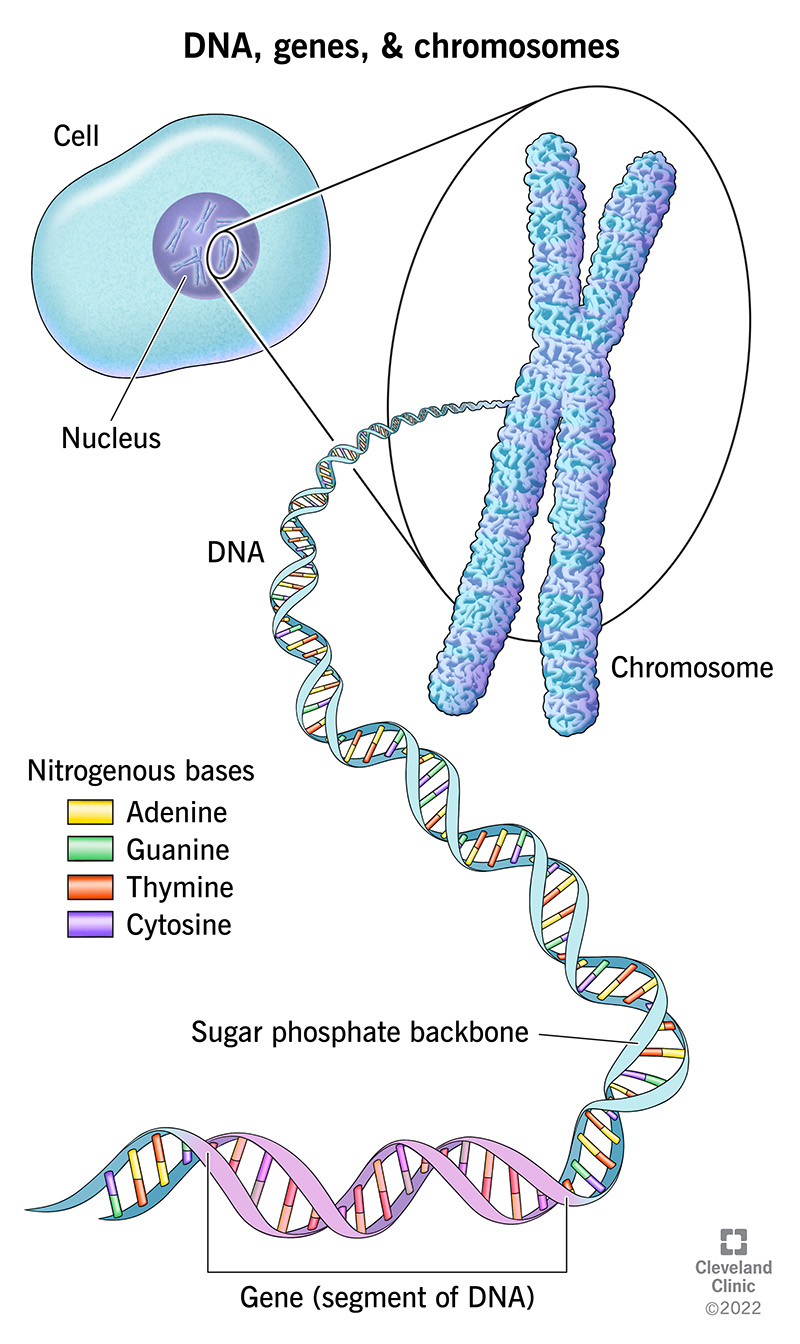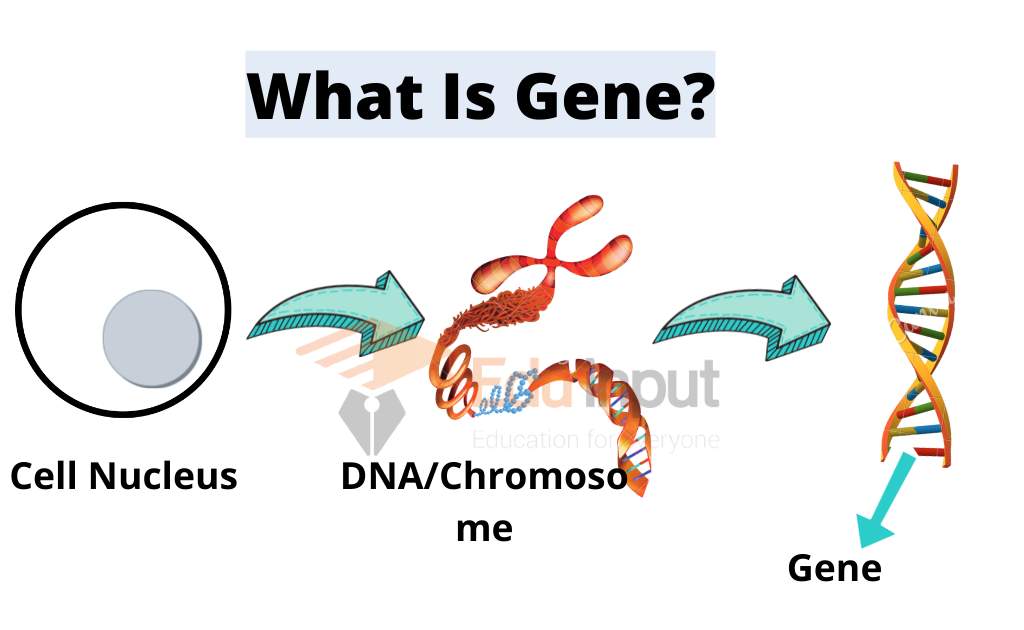When we talk about "gene goodenough," it's not about settling for less in our understanding of life's tiny instructions. Quite the opposite, really. It’s about getting exactly what's needed, the right kind of details, to make real progress in how we figure out human biology and, well, how things work inside us. This means looking closely at how information about genes gets gathered, how it's used, and what makes it truly helpful for those working to make discoveries.
You see, there's a whole lot of information out there about our genetic makeup, and a good bit of it is pretty complex. But, you know, the goal is always to make sense of it all, to pick out the important bits that can lead to new ideas or solutions. So, when we consider something like "gene goodenough" data, we are actually thinking about how accessible and useful this vast ocean of genetic facts can be for someone trying to solve a puzzle, whether that's understanding a health issue or figuring out how a new medicine might work. It's about clarity, more or less, and getting to the point.
This discussion will take a closer look at some of the ways we approach this genetic information. We will touch on how certain tools help researchers sort through it all, what some specific genes do, and how rules about using this kind of data keep everything fair and proper. It's, as a matter of fact, a way to explore what makes gene information truly valuable for scientific exploration and beyond. We're just trying to get a clearer picture of how it all fits together, you know, and what it means for people.
Table of Contents
- What Makes Gene Information "Good Enough"?
- Unpacking the Details - What is a "Gene Goodenough" Cytokine?
- Looking Closer at Specific "Gene Goodenough" Genes
- Accessing and Using "Gene Goodenough" Data
What Makes Gene Information "Good Enough"?
So, what exactly does it mean for gene information to be considered "good enough"? It’s not about perfection, but rather about its practical value and how well it serves its purpose for different people. For instance, some folks, particularly those running businesses or larger research groups, might need a special kind of permission to use certain genetic facts. This permission, a commercial clearance, ensures that the data is used in ways that respect its origin and the work put into gathering it. It’s a way of making sure everyone plays by the same set of guidelines, which is pretty important for big projects, you know, where lots of different groups might be involved. This helps keep things fair, in a way, for everyone.
How Geneanalytics Helps Researchers with "Gene Goodenough" Data
One tool that helps a lot with making gene information "good enough" for practical use is something called Geneanalytics. This system, you see, gives people who study things a neat way to figure out which chemical substances are connected to their particular collections of genetic instructions. It's like having a very smart assistant that can look at a list of genes you are interested in and then point you towards various tiny chemical bits or even actual medicines that might interact with those genes. This means you can, you know, start to connect the dots between the very small parts of our bodies and how different things, like drugs, might affect them. It’s pretty useful, honestly, for getting a clearer picture of how things work at a really detailed level, helping make the data truly "gene goodenough" for deep study.
Unpacking the Details - What is a "Gene Goodenough" Cytokine?
When we talk about a "gene goodenough" cytokine, we're talking about a specific kind of genetic instruction that leads to the creation of a very important signaling protein. This protein, which has many different jobs, is part of a bigger group of related proteins often involved in how cells react to trouble, particularly in causing swelling or irritation within the body. It’s like a messenger, you know, that tells other parts of the body to get ready for action, typically when there's an injury or an unwanted invader. This particular gene, it seems, helps create one of these versatile cell messengers that kicks off inflammation. So, it's pretty important for how our bodies respond to different situations, and understanding it is, well, vital for making sense of many bodily processes.
The Role of Macrophages in "Gene Goodenough" Processes
Now, this specific signaling protein, the one we just talked about, is mainly given off by certain specialized immune cells called macrophages. These cells are, in a way, like the body's clean-up crew; they're big eaters that gobble up foreign stuff and dead cells. But they also have this really important job of releasing these powerful messengers. So, when we consider what makes a process "gene goodenough" in this context, it's partly about understanding which cells are doing the talking and what they are saying. Macrophages play a central part in this communication, making sure that the right signals, like those for inflammation, are sent out when they are needed. They are, you know, quite essential to the body's internal messaging system, ensuring the "gene goodenough" response happens.
Looking Closer at Specific "Gene Goodenough" Genes
To really get a feel for what "gene goodenough" means in practice, it helps to look at some individual examples of genes and the kind of facts we collect about them. We gather a lot of information on each one, from what it does to what happens when it goes wrong. This comprehensive approach is what helps make the collected details genuinely useful for researchers. It’s not just about knowing a gene exists, but about having a full picture of its life and activities within the body. This is, you know, pretty much how we build up our knowledge of how living things operate at their most basic level, making sure the facts are always "gene goodenough" for serious study.
What is WASP Gene's "Gene Goodenough" Role?
Let's consider the WASP gene. This particular gene holds the instructions for building a protein that helps start the putting together of cell structures. It's like, in a way, providing the blueprint and the initial spark for building the internal scaffolding of our cells. When we talk about the "gene goodenough" information for the WASP gene, we're looking at a whole collection of facts. This includes what the gene actually does, which specific proteins it makes, what kinds of problems or health issues can arise if it isn't working right, and what biological systems it participates in. We also look at its relatives across different species, which are called orthologs, and where and when it is active in the body. All these pieces of information come together to give us a really complete picture, which is, you know, pretty essential for understanding its role in health and sickness. It's about getting the full story, basically.
TGFB1 Gene - Is Its Information "Gene Goodenough"?
Then there's the TGFB1 gene. This gene also holds instructions for making a protein, specifically a substance that encourages cells to change and grow. It’s a signal that helps with various aspects of cell development. When we ask if the information about this gene is "gene goodenough," we're considering the breadth and depth of the facts available. This includes, just like with the WASP gene, its main purpose, the specific proteins it produces, any health conditions linked to it, and the biological systems it influences. We also examine its evolutionary connections and where and when it is active. Having all these details helps researchers understand how this signal works in the body and what happens when it's not quite right. It's, you know, about having all the pieces of the puzzle to truly grasp its significance and make sure the data is, you know, completely "gene goodenough" for any kind of research.
Accessing and Using "Gene Goodenough" Data
Getting your hands on "gene goodenough" data, and then actually using it, involves some specific tools and guidelines. It’s not just about having the facts, but about being able to get them in a usable format and understanding the rules that come with them. This is pretty important for making sure that all the hard work that goes into gathering this information is respected and that it's used in a proper way. So, you know, there are systems in place to help people get the information they need while also protecting it. This helps keep everything orderly, and, honestly, it just makes sense.
Genealacart and Batch Extraction for "Gene Goodenough" Identifiers
One very helpful system for getting "gene goodenough" information is called Genealacart. This particular tool lets users pull out facts from the GeneCards database for large groups of gene names or codes all at once. Imagine you have a long list of genes you are curious about; instead of looking up each one separately, Genealacart lets you process them as a collection. This means you can get a lot of information, like details about the gene's purpose, its associated proteins, or any related problems, in one go. It's, you know, a very efficient way to gather what you need, making the process of getting "gene goodenough" data much smoother for those working with many genes at a time. It really streamlines things, you know, which is pretty helpful.
The Rules for Using "Gene Goodenough" GeneCards Data
It's important to remember that while this "gene goodenough" data is incredibly useful, there are clear rules about how it can be put to use. For instance, the information from GeneCards, which is a big collection of gene facts, cannot be put to certain uses without proper permission. If you're a business or an organization looking to use this data for commercial reasons, you will likely need to get an official clearance. This helps manage how the information is shared and used, making sure that its value is maintained and that the creators are acknowledged. So, you know, if you have questions about using this data, it's always a good idea to reach out and ask about the permission details. It's just about being respectful of the sources and the effort involved in putting all that "gene goodenough" information together.
This discussion has touched on what makes gene information useful, how tools like Geneanalytics and Genealacart help researchers, the specifics of certain genes like the one encoding a proinflammatory cytokine, WASP, and TGFB1, and the rules around accessing and using GeneCards data. We've explored how these elements contribute to our collective understanding of genetic material.
Related Resources:



Detail Author:
- Name : Edmond Littel Jr.
- Username : gbashirian
- Email : beahan.amina@conn.com
- Birthdate : 1974-08-06
- Address : 41670 Curt Port Suite 347 North Nickolas, AK 30990-2212
- Phone : +1-650-736-1726
- Company : Hudson PLC
- Job : Mechanical Engineer
- Bio : Minima facilis quidem odit nemo distinctio. Id in consequatur molestiae ut voluptatum. Eius amet inventore non.
Socials
facebook:
- url : https://facebook.com/towne1993
- username : towne1993
- bio : Aut voluptatem nemo culpa omnis cumque dolorem.
- followers : 123
- following : 2310
instagram:
- url : https://instagram.com/eva_xx
- username : eva_xx
- bio : Omnis omnis a dolorum eos totam qui qui soluta. Repellendus totam qui animi ut.
- followers : 6098
- following : 2477
twitter:
- url : https://twitter.com/eva.towne
- username : eva.towne
- bio : Nisi maxime aut voluptatum et dolorem recusandae. Id repudiandae quia non mollitia vitae cumque. Magnam qui dolorum perspiciatis qui pariatur quae adipisci.
- followers : 5970
- following : 2103
linkedin:
- url : https://linkedin.com/in/towne2021
- username : towne2021
- bio : Doloremque aut eaque saepe vero consequatur.
- followers : 3599
- following : 847
tiktok:
- url : https://tiktok.com/@townee
- username : townee
- bio : Qui officiis maxime qui nulla et vero odio est.
- followers : 811
- following : 2855